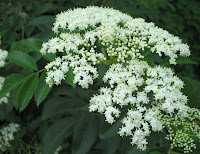If you're a regular reader of Natural Health News you'll already be aware that we've written extensively about vitamins and other natural support for brain health, not only here but in our other print and on-line publications.
We don't endorse the low doses referenced in this article but we call your attention to the fact that our recommendations seem to be more prevalent in the news these days.
We suggest 2800 mcg B12 and proper thyroid support and other select nutrients. Other providers often use an extensive IV nutrient blend and refer to hyperbaric oxygen therapy. Certainly I wish this had been offered to my mother, and most likely would have been available to her has she been under the care of a neurologist.
We don't endorse the low doses referenced in this article but we call your attention to the fact that our recommendations seem to be more prevalent in the news these days.
We suggest 2800 mcg B12 and proper thyroid support and other select nutrients. Other providers often use an extensive IV nutrient blend and refer to hyperbaric oxygen therapy. Certainly I wish this had been offered to my mother, and most likely would have been available to her has she been under the care of a neurologist.
A combination of low dose B-vitamins and omega-3 fatty acids may help improve brain function in people who have suffered a stroke, according to a new study in the American Journal of Clinical Nutrition.
The new study looked at 1,748 people aged 45 to 80 with a history of heart attack, angina, or stroke. They were assigned to one of these groups:
56 mcg of folic acid (as 5-methyltetrahydrofolate), 3 mg of vitamin B6, and 2 mcg vitamin B12 per day,
600 mg of the omega 3 fatty acids, EPA (eicosapentaenoic acid) and DHA (docosahexaenoic acid), in a ratio of 2:1 per day,
B vitamins and omega-3s, or
placebo.
For four years, the participants continued their supplements, and their thinking (cognitive) function was assessed at the end of the study. No significant effects on brain function were found in the different supplement groups, but looking just at people who had had a stroke yielded different results. Post-stroke, people who took a combination of B-vitamins and omega-3 fatty acids were significantly less likely to score low on a test of the ability to accurately name the month, date, year, day of the week, and time of day (temporal orientation task) than those who took placebo.
While this study only found relatively slight evidence, it makes a good starting place for further research. “These results could be useful in interventions aimed at preventing cognitive decline in high-risk individuals,” said lead study author, Valentina Andreeva, of the University of Paris XIII.
An aging problem
As the world’s population continues to get older, problems related to aging also grow, including the prevalence of Alzheimer’s disease and other forms of dementia. Alzheimer’s currently affects 1 in 8 people aged 65 and older.
Advancing age is the foremost risk factor for developing dementia. Addressing other risk factors—those that you can actually do something about—might be the most effective way to prevent the disease from developing. Modifiable risk factors for dementia include
high blood pressure (hypertension),
obesity,
high levels of homocysteine in the blood, and
inflammation.
If these risk factors look familiar, it’s because they’re some of the same ones for heart disease. In fact, about 30% of people who experience a stroke will go on to have dementia.
What you can do to help prevent dementia
While there is no cure for dementia, studies point to the power of prevention. See your doctor if you are concerned about your memory, and try these tips to keep your brain healthy for the long haul.
Maintain a healthy weight. This will help lower blood pressure, too.
Eat a diet rich in brightly colored fruits and vegetables. These foods contain powerful antioxidants thought to combat the effects of aging. The spice, turmeric, might also help prevent dementia, so be sure to enjoy your curries.
Get your B vitamins and omega 3s. Eat plenty of leafy green vegetables, bell peppers, shrimp, scallops, and cold water fish to boost the levels of these nutrients in your diet.
Have an active social life. People who are more involved in their community are less likely to develop dementia.
Get your daily exercise. Physical activity comes with many benefits, including weight loss, protection from dementia, lower blood pressure, and better mood. No amount is too little. Work your way up over time to at least 30 minutes on most days of the week.
Keep your brain busy. Learn a new instrument, do crossword puzzles, play a game of hearts; whatever you can do to exercise your mind will help keep those neurons firing.
(Am J Clin Nutr 2011;doi:10.3945/ajcn.110.006320)
SOURCE: Health Notes newswire

















